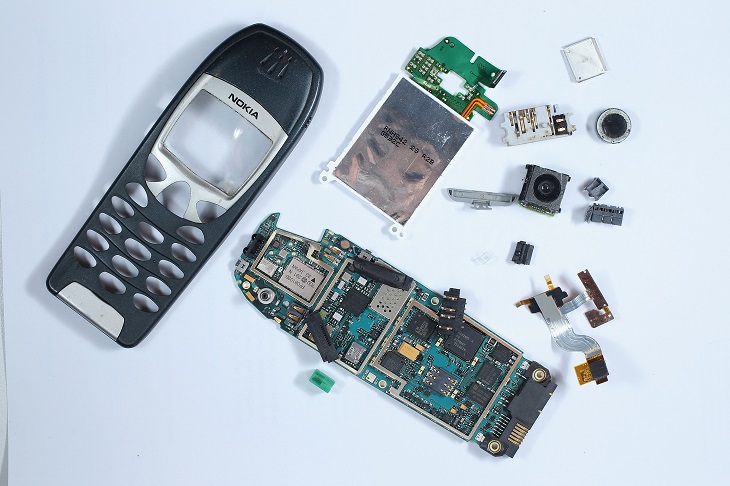The insidious spread of misinformation has revealed the dark side of communication; our increasing addiction to our devices puts us all at risk.
This is no more so than in the young generation, who treat mobiles like a source of undeniable truth. The belated recognition of its disruptive influence in the schools has emboldened states to ban them from the classroom; NSW is the latest, leaving only Queensland without a blanket ban.
Prior to the telephone, communication was slow and unreliable. The approach of the Spanish Armada in Elizabethan times was passed on from one coastal hilltop lighted beacon to the next. The North American Indians passed on messages with a more sophisticated code of hilltop smoke signals. Visual semaphore systems were invented in the late 1700s in France and the UK to transmit messages from hilltop to hilltop. In these cases, wet weather, or a lack of hills provided obvious limitations; information transfer by homing pigeons also had its drawbacks!
With the development of reliable wire-conducted electricity, new methods of communication became possible. The first step into modern technology was provided in 1837 by inventor Samuel Morse, in America; that year, two British inventors Wheatstone and Cooke also invented a different system. The US Congress supported the commercialisation of the telegraph and in 1844 the first long distance transmission was made, using his code of dots and dashes; the British system was more complicated and failed to find a market. The telegraph spread throughout the world and provided the major link in what was at the time the Great British Empire.
Relay stations were needed to onward-transmit messages between Britain and its Indian Empire. I visited one of these at a remote location on Telegraph Island, at the ‘bend’ of the Persian Gulf, a place so isolated and Godforsaken that the operators frequently went crazy, adding the phrase ‘going round the bend’ to the British lexicon.
Although in competition with the later telephone, the two systems thrived side by side for many years until the development of satellite and sub-sea fibre-optic cables ushered in the start of the digital age in the 60s and 70s.
The telephone, invented by Alexander Graham Bell, has proved a life-changer as well as a life-saver. The Bell family had migrated to Canada in 1870 and a patent application for the ‘talking telegraph’ was made in Washington in 1876. On the same day (February 14), a similar application was made by Elisha Gray at the same patent office, with legal disputes continuing for years. The following year the Bell Telephone Company was established and until 1940 had a monopoly on telephone services in North America. Eventually, legislation broke up the company, although the name lives on in Baby Bell and Ma Bell companies.
Bell had originally trained as a teacher of the deaf; his mother and future wife were both afflicted. After involvement in the new company, he lost interest in the telephone and moved on to further inventions; these included an early gramophone, a metal detector, discovery of the element selenium, and early aircraft designs. He finished his illustrious career as President of the National Geographic Society.
When I was working in a UK hospital in the 1960s, the two means of contact were the Tannoy loud-speaker and the Motorola pager, meaning it wasn’t possible to wander too far from ‘home’ when on call. These were developed around the 1950s and are still in common hospital use, as some areas of hospitals are dead zones for mobiles. They were also used in other emergency services and businesses.
In that era, making a phone call often meant a trip to the corner phone box, as few had home phones. For many years being ‘on call’, for me, meant being stuck at the end of a phone, a problem common to many occupations.
The Bell telephone company failed to take out patents elsewhere, allowing competition to develop, particularly in the Nordic countries. The concept of a portable phone was first patented by a Finnish inventor Eric Tigerstedt in 1917, research sped up following the end of the second world war. Nokia, a Finnish company established in the 1860s, became involved in electronics and telephone development in the 1960s and became a world leader.
The Japanese company, Nippon, was first to develop a mobile phone network in 1979, then called 1G (first generation), for use in cars; Swedish company Ericsson was also an early starter. In 1981 Nokia launched its first mobile telephone service for motor cars and in 1987, launched its first fully mobile telephone. Mobile competition came from the US company Motorola, with the world’s first commercial portable phone in 1983, it weighed 2 kilos and cost the princely sum of $4,000. In 1998, Motorola was overtaken by Nokia as the biggest phone seller, it now sits at number 7 in world production. Samsung, from South Korea, has the top slot, with 20 per cent of the market closely followed by Apple at number 2; Sony (which took over Swedish company Ericsson) is at 13 and Nokia at 15, the other top companies are all Chinese.
There are two categories of phone: basic mobile phones, usually 0 to 2G, for making calls (around 7 billion worldwide), and the more expensive smart phones. The basic phones are ubiquitous, increasingly found in isolated areas; for example, the United Nations is now distributing relief payments to phones, following the latest drought in Ethiopia. Smartphones have additional capabilities such as touch screens internet connection, games, cameras, etc (around 6 billion worldwide). Each passing upgrade, the latest to fifth generation 5G, increases their capabilities and speed, and reduces size; we currently have communication, information, navigation, translation, illumination, calculation, etc. What next?
The wonders of easy communication have had their upsides and downsides for modern society. For me, many years ago a mobile phone would have simplified work contact, and allowed greater freedom of activity. It now provides that flexibility of life in many areas of business and means it is no longer necessary to have an office to take calls or deal with emergencies. Families have better contact with the elderly relatives, and children can be better monitored. Sometimes we could wonder whether phone contact has become too easy, and face-to-face social interaction more difficult!
Concerns have been raised about microwave radiation from the handsets, particularly leading to brain cancers – unproven – and (with storage in a pocket) possible male infertility; there is some evidence that falling sperm counts may be related. The hazards of being distracted by a phone whilst driving, even whilst walking, are well-known. Heavy use in the young has now been linked to behavioural disorders and the reduced ability to learn and retain information, with the increase in ADHD linked to use in teenagers who often spend 3 or more hours a day connected.
There is an inevitable decline in physical fitness with inactivity, and leisure time invaded, leading to increased obesity with its associated medical problems. The average use is 2.5 hours per day and mobile phone addiction has now been recognised, with anxiety, depression, sleep disturbance, and fear of losing the phone coming into the dictionary as ‘nomophobia’.
Apart from physical disabilities, social media use has led to a range of problems with grooming, bullying, spreading of fake news, and hacking of personal information; who would have thought that being an ‘influencer’ could become a highly lucrative career? As these phones move from being an accessory to a necessity, the complications of their loss, malfunction, or damage become more significant.
We rely on electricity for charging but our electricity supply is becoming increasingly unreliable. With the rising risk of world conflict, attacks on satellites become another risk for phone connection. For those who lose their phones, with their stored contact numbers, banking details, personal information, it can be a trying time.
Old-fashioned individuals like me, back up our information on pieces of paper.
What does the future have in store? Artificial intelligence is already taking phones to the next level, used in something like 35 per cent of handsets currently sold. It improves function but also provides increasing information about our wants and desires, ideal information for advertising and marketing. The latest concern is the use in spying with some apps, such as TikTok becoming the topic of national security conversations. The Ukraine War has suggested they can be used to identify the location and targeting of enemy soldiers. Encryption technology has been used in a different war, by drug dealers and criminals, to avoid detection.
The sixth-generation phone is now work in progress, perhaps with wireless charging and yet more applications. Metaverse is gambling on immersive interactive technology but users are few, and the stock-market value of the company has crashed. Ultimately mobiles could disappear and our brains be connected directly to the internet cloud through an advanced brain/computer interface. A thought could be sufficient to carry out an action – a brave new world where we could end up being monitored, or even controlled, rather than being in control. George Orwell’s 1984 date may have long passed, but Big Brother may yet end up watching us!
Got something to add? Join the discussion and comment below.
Get 10 issues for just $10
Subscribe to The Spectator Australia today for the next 10 magazine issues, plus full online access, for just $10.


























Comments
Don't miss out
Join the conversation with other Spectator Australia readers. Subscribe to leave a comment.
SUBSCRIBEAlready a subscriber? Log in